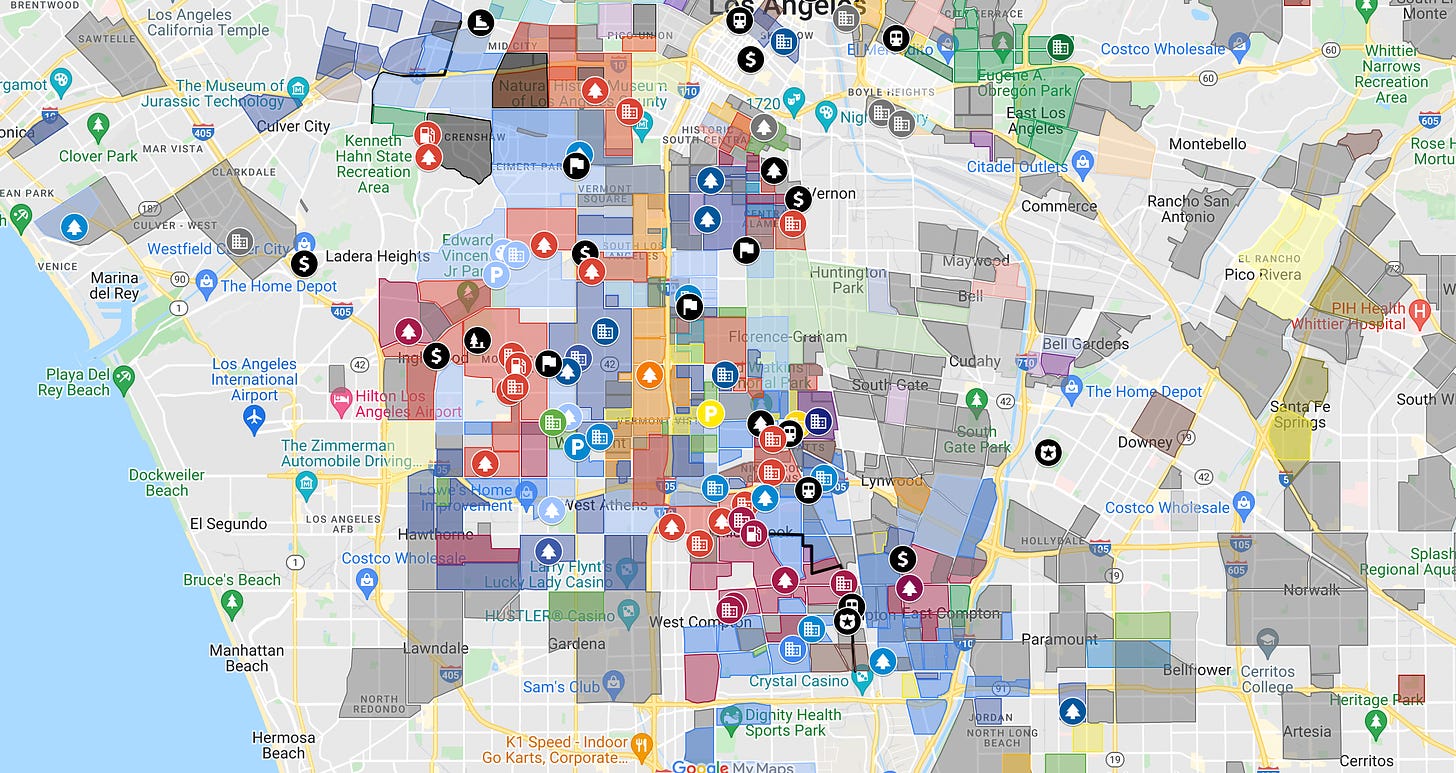LA Gang Maps: Are They Up-to-Date? West Hollywood & Melrose - What You Need To Know
Is the information presented on gang maps a current and accurate reflection of the realities on the streets of Los Angeles? Understanding the evolving landscape of gang activity in Southern California is crucial for community safety and informed decision-making.
The query regarding the absence of gang activity in West Hollywood and the Melrose District on some maps immediately raises questions about their currency. These districts, known for their vibrant nightlife, entertainment industry presence, and affluent residential areas, may present a different security profile compared to other parts of Los Angeles. However, the absence of data doesn't necessarily equate to the absence of risk. It is important to note the data can be outdated, not accurate or may not reflect the current dynamics on the streets.
Los Angeles County, unfortunately, bears the grim moniker of the "Gang Capital of America," a testament to the persistent challenges posed by street gangs. Estimates suggest a staggering 450 active gangs, with a combined membership exceeding 45,000 individuals. This figure underscores the pervasive nature of gang-related crime and its significant impact on public safety. Streetgangs, often formed by African American and Latino youths, present a complex web of criminal alliances that extend their influence through intimidation, violence, and the control of specific territories. These are critical factors to consider while assessing the accuracy of any map, particularly when considering specific neighborhoods or districts.
The maps that are used to depict the gang territories are not always accurate or up-to-date. Such resources attempt to visually represent the geographic distribution of gang influence, identifying which gangs control or impact specific regions within the city. These maps use specific color codes and labels to illustrate the boundaries of each gang, and in some cases, depict the geographic range of the area that is being controlled by them. However, it is very important to note that gang activity can be fluid. There are factors like law enforcement operations, internal gang conflicts and shifting allegiances, which means that any single map is a snapshot of a constantly moving target.
The maps are published by law enforcement agencies like the LAPD (Los Angeles Police Department), these maps are based on gang injunctions. These legal tools are used to control and limit the activities of known gang members within specific areas. The LAPD, the law enforcement agency that operates within the city of Los Angeles, has put out a number of gang injunctions. These are legal instruments that are aimed at curbing gang activities within specific geographic areas. As such, the maps reflect these legal constraints. However, the legal status of a gang does not always reflect its current status on the streets. Any changes to gang territories or gang members may not be reflected in the maps.
The 18th Street Gang, for example, is a significant presence in Los Angeles, having grown to become the largest gang in the area, it was founded sometime in the 1960s, near 18th Street and Union in the Rampart District. Gang maps often provide insights into the historical evolution of gang territories. Understanding how specific gangs developed and how they grew will shed a light on the present crime.
The use of "LA gang maps" is important to understand the intricate network of Los Angeles' most notorious territories. The key to the map includes several groups: The Bloods/Pirus (indicated in red), the Crips (blue), the Hoovers (orange), and Mexican gangs (Surenos) shown in brown. These maps, and the data they hold, help those who live and work in these areas understand their surroundings and any potential risks.
| Category | Details |
|---|---|
| Geographic Focus | Los Angeles County and surrounding areas. Maps may zoom in on specific neighborhoods or districts. |
| Map Purpose | To visually represent gang territories and their geographical boundaries within the Los Angeles area. |
| Intended Audience | Law enforcement, community members, researchers, and anyone interested in understanding gang dynamics. |
| Information Sources | Information often comes from law enforcement intelligence, gang databases, and reports of gang-related activity. |
| Map Symbols | Use of color codes to represent different gangs: Red (Bloods/Pirus), Blue (Crips), Orange (Hoovers), Brown (Mexican Gangs/Sureos). |
| Limitations | Maps are snapshots in time, subject to change as gang activities evolve, internal conflicts arise, and law enforcement strategies shift. |
| Examples of Gangs | 18th Street Gang, various Bloods and Crips sets, Sureos, Hoovers, and many others. |
| Data Relevance | Provides context for understanding gang presence, informing community safety strategies, and supporting law enforcement operations. |
| Disclaimer | Maps should be used as a general guide and may not always reflect all aspects of the current gang landscape. |
| Official Resources | Los Angeles Police Department (LAPD) Website for crime data and related information. |
Being informed about crime in your community is a critical step in preventing future occurrences. The LAPD has a crime mapping portal where you can view crimes reported by the department. You can also access crime mapping and other relevant information by going to the crime mapping agencies tab.
The dynamics of street gangs are in a constant state of flux. Internal conflicts, strategic alliances, and law enforcement initiatives are all impacting these territories. Moreover, the socio-economic conditions that often give rise to gang membership can also shift, influencing the overall environment. It is critical that anyone who uses these maps understands that they may not reflect the current situation.
These factors explain why West Hollywood and the Melrose District might not show significant gang activity on all maps. These areas might have different dynamics due to a variety of reasons. The maps are not a perfect representation, and are just a starting point.


